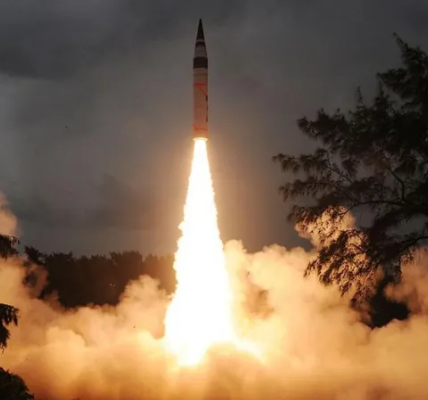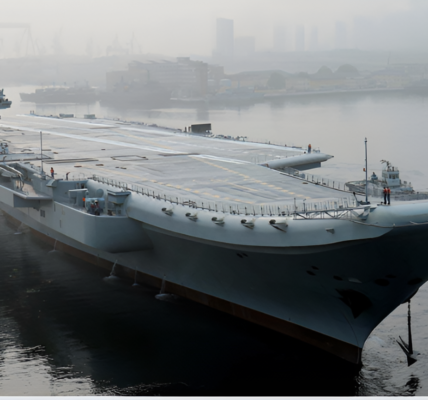
In his classic work The Defense of Duffer’s Drift, Ernest Swinton taught generations of military professionals key lessons in strategy through the dreams of Lieutenant Backsight Forethought, who learned from his mistakes in defending a river crossing during the Boer War. Over six dreams, he encountered combat scenarios shaped by his tactical errors, each dream providing valuable insights for improvement. This is akin to how an artificial intelligence (AI)-powered system might evaluate combat scenarios. However, while Swinton’s lieutenant wrestled with just six dreams, an AI would evaluate millions, considering vast amounts of information at extraordinary speeds. This fundamental difference is why AI has the potential to revolutionize warfare — accelerating decision-making and optimizing strategic outcomes.
While forecasting the future of warfare is never easy, one of the greatest challenges is avoiding the temptation to project the lessons of past wars onto the unknown future. New technologies, particularly AI, are challenging old theories of conflict, making accurate predictions about warfare’s evolution even more difficult. The most promising way to anticipate the role of AI in future combat is to combine two sets of knowledge: understanding the micro-dynamics of warfare (the smallest, most fundamental combat interactions) and evaluating AI’s ability to disrupt traditional battle paradigms based on human limitations.
The Micro-Dynamics of War
For centuries, military experts have adhered to a Clausewitzian understanding of warfare, based on the need for overwhelming force and navigating uncertainty. This traditional view was shaped by human limitations: humans are not the fastest or most agile creatures on the battlefield. We cannot swiftly dodge bullets or always hit the target with precision. During World War II, for example, it took about 10,000 rounds to cause a single casualty. Even more recently, the numbers were similar in U.S. counterinsurgency efforts in Afghanistan and Iraq.
To overcome these deficiencies, military strategy has often relied on overwhelming firepower and heavy armor. But the true dynamic of combat is not just about firepower or accuracy. Research I conducted for my dissertation suggests that the real force in warfare lies in the manipulation of lethal exposure — the degree to which one side’s forces are vulnerable to enemy fire. AI could drastically improve the way military forces manipulate exposure on the battlefield, fundamentally changing the speed and outcome of conflict.
Lethal exposure is the “invisible hand” of warfare, determining the speed at which attrition (the depletion of forces) occurs. By controlling exposure, one can control the tempo of battle. Combatants may have equal firepower, but the force that can manipulate exposure — hiding its own forces while exposing the enemy’s — will dictate the pace of attrition. In essence, warfare is less about brute force and more about how quickly you can reduce the enemy’s resources without depleting your own.
How AI Will Alter Combat Dynamics
The fundamental change AI brings to warfare is its ability to dramatically speed up decision-making, enhancing all aspects of battlefield strategy. Consider the Russian military’s Tsentr-2019 exercise in 2019, which tested an AI-powered command, control, communication, and intelligence system. This AI system processed vast amounts of real-time battlefield data, assessed combat scenarios, and provided commanders with ranked mission options. While still in early stages, this development is a glimpse into a future where AI could command and control military units, making decisions faster and more efficiently than any human strategist.
But can AI really outperform seasoned military professionals? The answer lies in understanding AI as a unique actor with capabilities vastly different from human cognitive limitations. AI doesn’t rely on human intuition; instead, it analyzes problems by stripping them down to essential elements and optimizing for the best solution. AI systems are like extraterrestrial beings that perceive the world in ways humans cannot — finding patterns and making decisions outside the human “visible spectrum.”
An example of this comes from the field of artificial intelligence applied to complex games like Chess and Go. AI programs have already outperformed the world’s top players in these perfect-information games. In a stunning example, DeepMind’s AlphaGo AI defeated Lee Sedol, one of the world’s best Go players, with a move that no human would have considered — an indicator of how AI can explore strategies in ways humans cannot even imagine.
The true value of AI in warfare lies in its ability to analyze and optimize combat decisions on a scale and speed that far exceeds human capabilities. AI will be able to process vast amounts of battlefield data in real-time, identifying patterns of exposure and attrition, and crafting optimized strategies with an efficiency that human commanders cannot match.
The Future of Warfare: A Strategic Arms Race
The coming AI revolution in warfare will likely lead to an arms race, not just for more powerful weapons, but for the most advanced AI-driven battlefield commanders. Militaries will vie for the AI systems that can make the fastest and most accurate decisions in combat. This shift will not just affect traditional militaries; it will level the playing field, giving nations with advanced AI systems a significant advantage, regardless of their size or traditional military strength.
But AI’s potential goes beyond just faster decisions. AI-driven combat will make the use of lethal force more precise, quick, and localized. Weapons will be more targeted, surgical, and efficient, likely transforming how warfare is conducted — making conflict faster, more intense, and devastating for the losing side. In the future, wars will not only be about defeating enemy forces but about managing resources more efficiently and depleting the enemy’s strength as quickly as possible.
The U.S. Response: Understanding AI in Warfare
Given that AI technologies are readily available to military forces around the world, the U.S. government cannot afford to simply ban the use of AI in warfare. Instead, it must invest in understanding how AI behaves on the battlefield. This understanding can be achieved by studying AI’s behavior in simulated virtual combat environments, where its strategies and decision-making processes can be observed in action.
In addition, the U.S. should focus on studying AI’s unique way of processing battlefield information — its “black box” behavior. Much like scientists study viruses to develop vaccines, military strategists must analyze how AI “thinks” and make strategic preparations based on this insight.
To prepare for an AI-driven future of warfare, the U.S. should also invest in technologies that complement AI’s capabilities — such as advanced sensors, unmanned vehicles, and exoskeletons. These technologies will harness the power of AI, ensuring that its speed and accuracy can be fully utilized on the battlefield.
Conclusion
AI is not just a tool; it is a revolutionary force that will redefine the future of warfare. The U.S. and other nations must begin preparing for a future where AI plays a central role in combat strategy, driving decision-making speeds, optimizing military tactics, and ultimately transforming the very nature of conflict itself. The military strategies of tomorrow will be shaped by AI systems that analyze and manipulate lethal exposure with unprecedented precision — reshaping the landscape of warfare in the 21st century.



